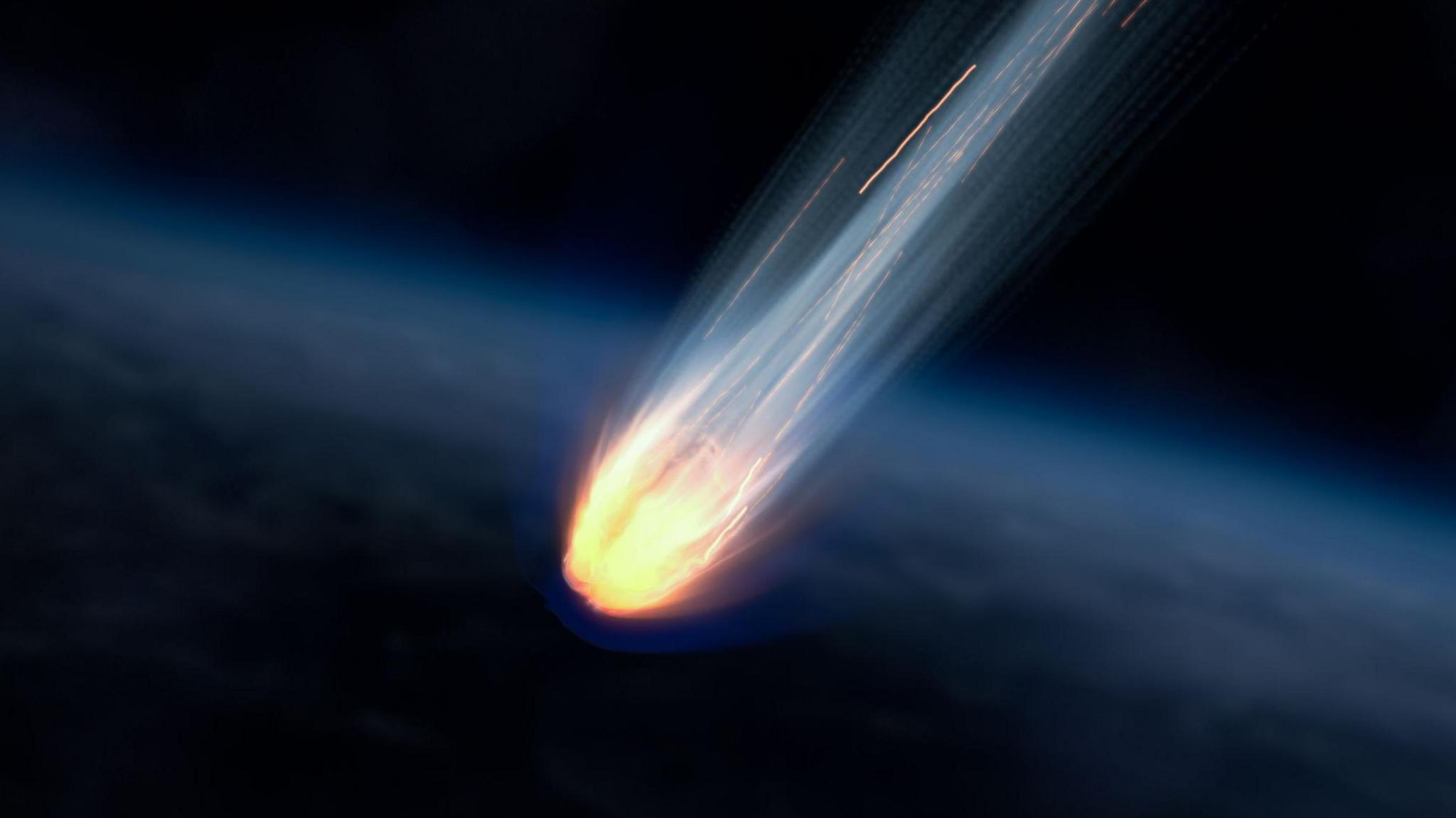Billion year old meteorite 'influenced early life'

Scientists studied microscopic crystals to date the meteorite
- Published
Scientists say a massive meteorite struck north-west Scotland 200 million years later than previously thought - and may have influenced early life on Earth.
The meteorite, which created a layer of rock in parts of the Highlands called the Stac Fada Member, was believed to have occurred 1.2bn years ago.
But new research led by the University of St Andrews and Australia's Curtin University suggests it actually happened 990 million years ago.
The study also suggests the impact came at a similar time to the emergence of early lifeforms called freshwater eukaryotes - ancient ancestors of plants, animals and fungi.
The scientists used tiny zircon crystals in rocks as geological "time capsules" to date the meteorite impact.
The research has been published in the journal Geology, external.
- Published9 June 2019
- Published14 September 2016
Prof Chris Kirkland, of Curtin University, said: "The revised dating suggests these life forms in Scotland appeared at a similar time to a meteorite impact.
"This raises fascinating questions about whether large impacts may have influenced environmental conditions in ways that affected early ecosystems."
He added: "While the impact crater itself has yet to be found, this study has collected further clues that could finally reveal its location."
Prof Tony Prave, from the University of St Andrews, said the impact occurred on a landscape sculpted by rivers, lakes and estuaries with thriving microbial ecosystems.
He said: "Impacts typically blow away the land surface and create deep craters.
"What makes Stac Fada unique is that it preserves not only the record of the impact event but also of the actual land surface across which those ancient ecosystems existed prior to the impact and, importantly, how they recovered from such a natural disaster."
NASA Johnson Space Centre and the University of Portsmouth also collaborated on the research.